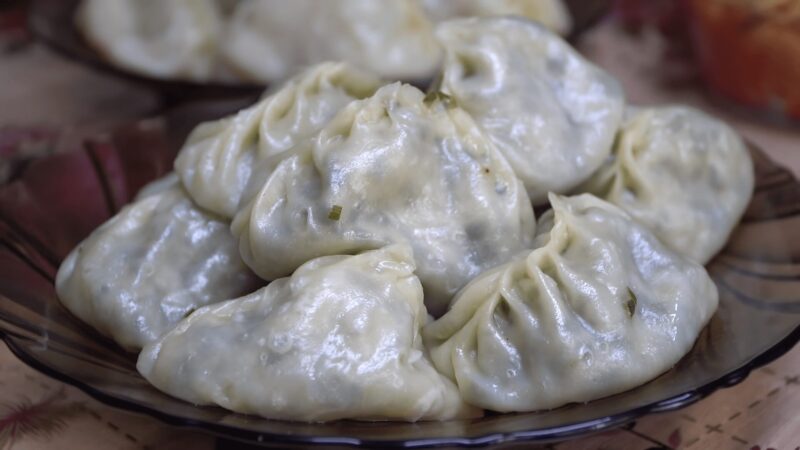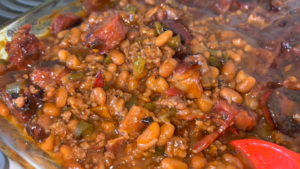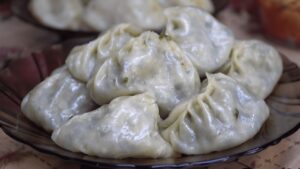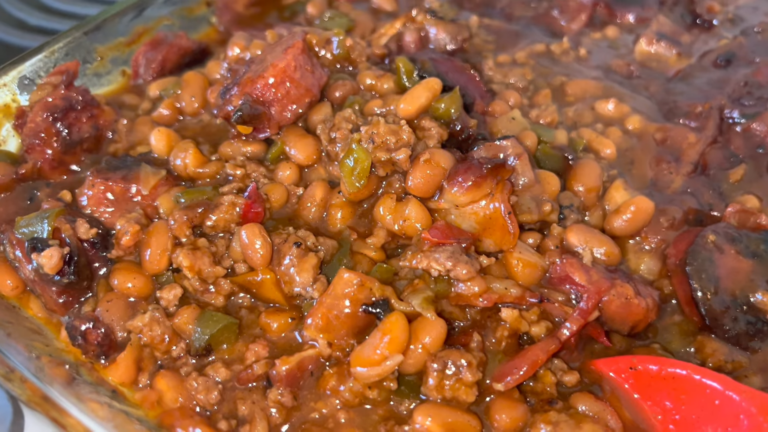Uyghur cuisine offers a unique gastronomic experience, reflecting the rich cultural heritage of the Uyghur people in China’s Xinjiang Uyghur Autonomous Region. Central to Uyghur culinary traditions are the influences of the ancient Silk Road and the region’s location in Central Asia, which have contributed to a dynamic food culture characterized by a fusion of Turkic, East Asian, and Central Asian flavors. The cuisine is known for its robust use of spices, distinctive cooking techniques, and a diet largely based on grain, dairy, and meat.
Signature dishes demonstrate the creativity and adaptability of Uyghur cooks. Ingredients such as hand-pulled noodles and roasted meats point to the geographical and historical connections of the Uyghurs. Fundamental ingredients include roasted mutton and beef, popularized in skewered forms like kebabs, as well as rice dishes that often contain locally-sourced produce and meats. Dining in Xinjiang is not just about satisfying hunger; it’s a communal experience that is steeped in tradition and customs.
Key Takeaways
-
Uyghur cuisine is a fusion of various culinary influences enriched by the region’s history along the Silk Road.
-
Central features of the cuisine include the extensive use of mutton, beef, and spices that reflect its regional character.
-
The communal nature of Uyghur dining emphasizes sharing and hospitality, highlighting the cultural importance of food.
Signature Dishes
Uyghur cuisine is recognized for its rich and hearty flavors, with a blend of cooking techniques and ingredients that reflect its cultural melting pot. An array of traditional dishes emphasizes meats like lamb and beef, hand-pulled noodles, and aromatic spices, offering a bold taste experience.
Samsa
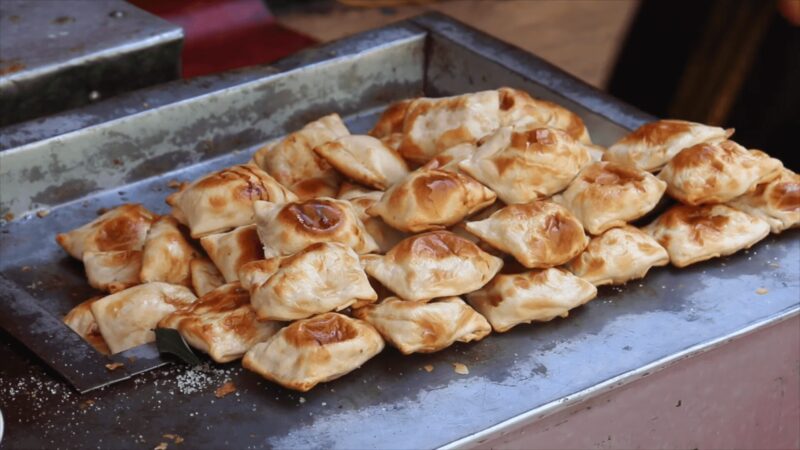
Samsa are savory pastries filled traditionally with a mixture of beef, onions, black pepper, and salt, often topped with sesame. Cooked in a clay oven, these flaky pies resemble hand pies and serve as a popular street food in many parts of Central Asia. They are a testament to the Uyghur’s meticulous and flavorful preparation of meat dishes.
Laghman
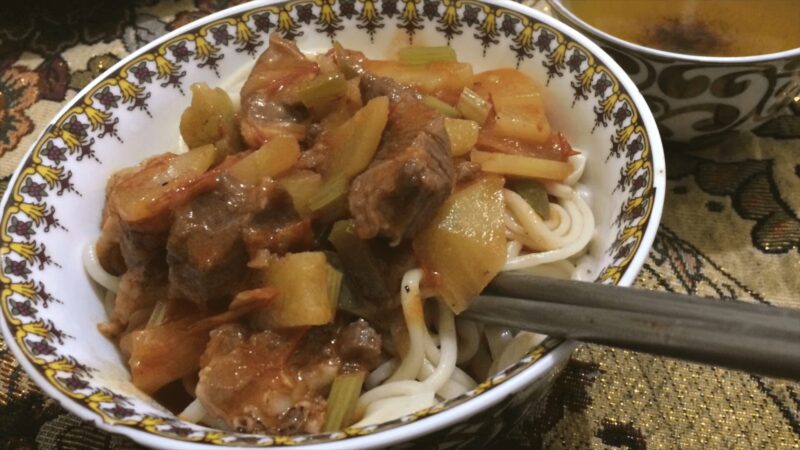
The centerpiece of dishes is Laghman, comprising hand-pulled noodles tossed with lamb, root vegetables, and a spiced sauce. This dish showcases the Uyghur people’s skill in noodle making, resulting in a dish that is as satisfying to the palate as it is visually appealing.
Polo
As a rice specialty, Polo stands out for its use of aromatic spices and slow-cooking methods. The rice absorbs the flavors from the tender chunks of lamb, and the addition of carrots and green onions add sweetness and freshness to the dish, illustrating the Uyghur cuisine’s balanced flavor profile.
Kebabs

Kebabs in Uyghur cuisine mean skewered and roasted lamb chunks marinated with cumin and chili powder. The meat is cooked over open flames that caramelize the exterior while preserving a tender interior. These savory skewers are a common sight at bazaars and reflect the region’s fondness for robust, spiced meats.
Historical Context
The Uyghur cuisine is a testament to a rich history marked by cultural exchanges and the unique geographical position of the Xinjiang region. The intersection of various civilizations through trade and conquest has left an indelible mark on the food culture, reflecting a blend of Central Asian traditions and influences from other Silk Road cultures.
Silk Road Influence
The Silk Road was a nexus of commerce and culture, connecting the Uyghur homeland with distant territories. Through this network, ingredients and culinary practices from places like Greece, Persia, and Arabia flowed into Uyghur society. Dishes such as hand-pulled noodles, also known as laghman, are examples of this cultural intermingling, signified by their popularity across the region.
Central Asian Traditions
The heart of Uyghur’s culinary tradition lies in its Central Asian roots. As a Turkish ethnic group, Uyghurs have maintained a distinct set of food preparation techniques and flavors. Prominent examples include big plate chicken (daqian ji) and savory samsa, which are baked in clay ovens, similar to the central ovens found throughout Central Asia.
Xinjiang Province History
Their cuisine’s evolution has been deeply influenced by the historical events in the Xinjiang Province. With Islam being the predominant religion among them, dietary laws have shaped the cuisine, emphasizing the use of halal meats while eschewing pork, common in Han Chinese diets. The relationship with the Chinese government has also had implications for their foodways, as policies and regional changes have pressed upon traditional life, including culinary practices.
Fundamental Ingredients & Spices
The diversity of Uyghur cuisine is built on a foundation of select meats and vegetables, enhanced by a distinctive blend of spices that give dishes their characteristic flavors.
Meats
- Lamb: A centerpiece of Uyghur food, lamb appears in numerous dishes, valued for its richness and compatibility with bold seasonings.
- Other Meats: Although lamb is predominant, other meats such as beef and chicken are also utilized to diversify the flavors of the cuisine.
Vegetables
- Onions and Garlic: These aromatics form the base of many Uyghur recipes, contributing a depth of flavor.
- Carrots: Often used in sweetened rice pilafs, carrots add a natural sweetness and a splash of color to dishes.
- Tomatoes and Eggplant: Essential for their moisture and texture, they are staples in stews and vegetable medleys.
Spices and Flavorings
- Cumin Seeds: Integral to the cuisine’s flavor profile, cumin seeds are frequently used for their warm and earthy notes.
- Salt and Black Pepper: These fundamental seasonings enhance and balance the flavors within Uyghur dishes.
- Chili: Red pepper flakes and other chili forms introduce a spicy heat, elevating the dishes’ intensity.
Dining Experience
Exploring their cuisine offers a journey through its rich street food culture and the authentic dining experiences of Uyghur restaurants. Visitors can indulge in a variety of delicious and traditional Asian food that reflects the ethnic heritage of the Uyghur people.
Street Food Culture
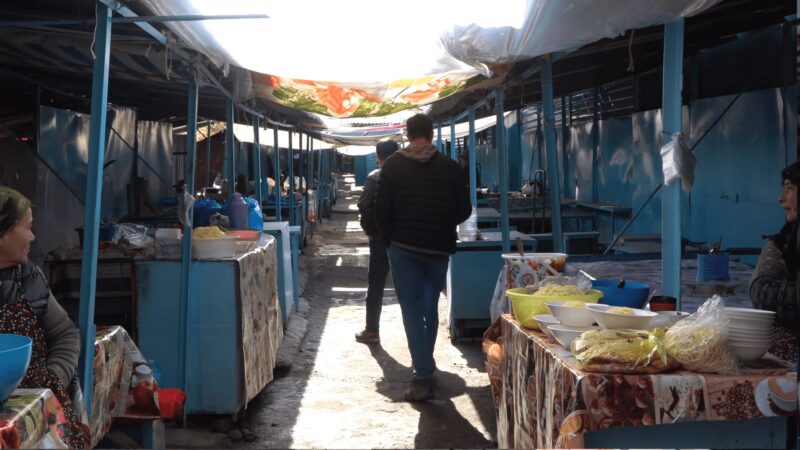
Their street food is synonymous with vibrancy and flavor. One can encounter a myriad of stalls lining the streets, offering an array of mouthwatering snacks and dishes. Notably, samosas and boso lagman stand out as popular choices among locals and tourists alike. These foods not only provide a delicious quick bite but also immerse one in the communal spirit of Uyghur culture.
Restaurants
When one steps into a Uyghur restaurant, the warm hospitality is palpable. The menu typically showcases a range of ethnic cuisine, with dishes like hand-pulled noodles and lamb skewers prepared with traditional methods that have been passed down through generations. The dining experience is not merely about sustenance but also an opportunity to engage with Uyghur cultural traditions and culinary excellence.
Influence on Regional and Global Cuisines
Uyghur cuisine has a distinct identity shaped by its location and history. It provides a unique fusion of tastes that has influenced both Central Asian and Chinese culinary practices.
Central Asian Cuisine
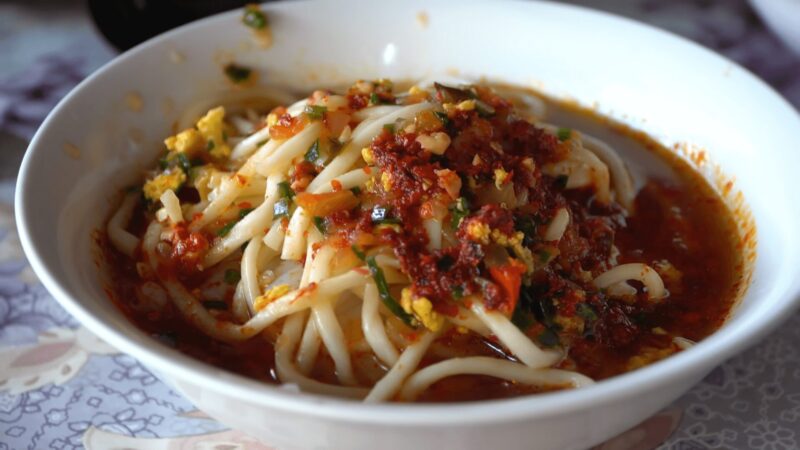
Central Asian cuisine exhibits significant influences from Uyghur food traditions due to the shared history and cultural exchanges in the region. Predominantly halal, Uyghur dishes have enriched the culinary landscapes of neighboring countries with bold spices and hearty dishes. Countries like Kazakhstan, Kyrgyzstan, and Tajikistan feature similar staples as Uyghur cuisine, notably pilafs (polu), kebabs, and dumplings (manta), highlighting the movement and integration of Uyghur culinary techniques and ingredients across borders.
Impact on Chinese Culinary Practices
Uyghur cuisine has also altered Chinese food culture with its distinctive flavors and cooking methods. The tradition of stir-frying, frequently associated with Chinese cuisine, has been adapted in Uyghur cooking to suit their own aromatic and savory flavor profiles. Uyghur restaurants are not only places for dining but also venues for cultural expression and advocacy within China.
FAQs
This section addresses common inquiries about Uyghur cuisine, offering insights into flavors, dietary options, traditional dishes, and dining experiences.
What are the characteristic flavors and spices in this cuisine?
Uyghur cuisine is renowned for its bold flavors, often comprising a rich tapestry of spices such as cumin, chili powder, Sichuan peppercorns, and star anise. These spices imbue dishes with a distinctive taste that reflects the fusion of Central Asian and Chinese culinary traditions.
Can vegetarian options be found within their culinary offerings?
Although Uyghur cuisine is heavily meat-centric, there are vegetarian options available such as langman, a dish that can be prepared with vegetables instead of meat, and vegetable skewers. These dishes maintain the vibrant flavors characteristic of Uyghur food while catering to vegetarian dietary preferences.
What are some traditional dishes to try at these restaurants?
At Uyghur restaurants, patrons should try signature dishes such as polo, a hearty rice dish with carrots and meat, and samsa, savory pastries filled with spiced meat. Other must-try traditional foods include Uyghur versions of hand-pulled noodles, known as laghman, and various kebabs.
How does Uyghur cuisine differ from other regional Chinese food?
This cuisine stands apart from other regional Chinese cuisines through its use of lamb as a staple protein and its heavy reliance on bread and noodles rather than rice. It also incorporates a different set of flavor profiles, favoring bold and warming spices.
Are there common allergens, such as nuts, used in Uyghur cooking?
Nuts are not typically a staple in their cooking, which favors wheat, meat, and vegetables. However, diners with specific allergies should always communicate their dietary needs as individual dishes may vary.
What type of dining experience should one expect at a Uyghur restaurant?
Visitors to Uyghur restaurants can expect a vibrant and communal dining experience, with many dishes served family-style. The atmosphere is often informal, emphasizing the enjoyment of rich, spice-infused foods in a welcoming, communal setting.
Conclusion
Uyghur cuisine offers a unique fusion of flavors that reflect its rich historical tapestry. This culinary tradition marries Central Asian and East Asian influences, resulting in a variety of distinctive dishes. Key components include handmade noodles, rice dishes like polo, and nan, a type of bread. Common ingredients encompass a range of meats with lamb being particularly prominent, paired with fresh seasonal vegetables.
Despite the hurdles faced, Uyghur cuisine continues to be celebrated for its rich flavors and cultural significance. It showcases the importance of keeping culinary traditions alive as an expression of cultural identity. Those who partake in Uyghur dishes are not only treated to a delightful culinary experience but are also partaking in a crucial aspect of Uyghur heritage.


